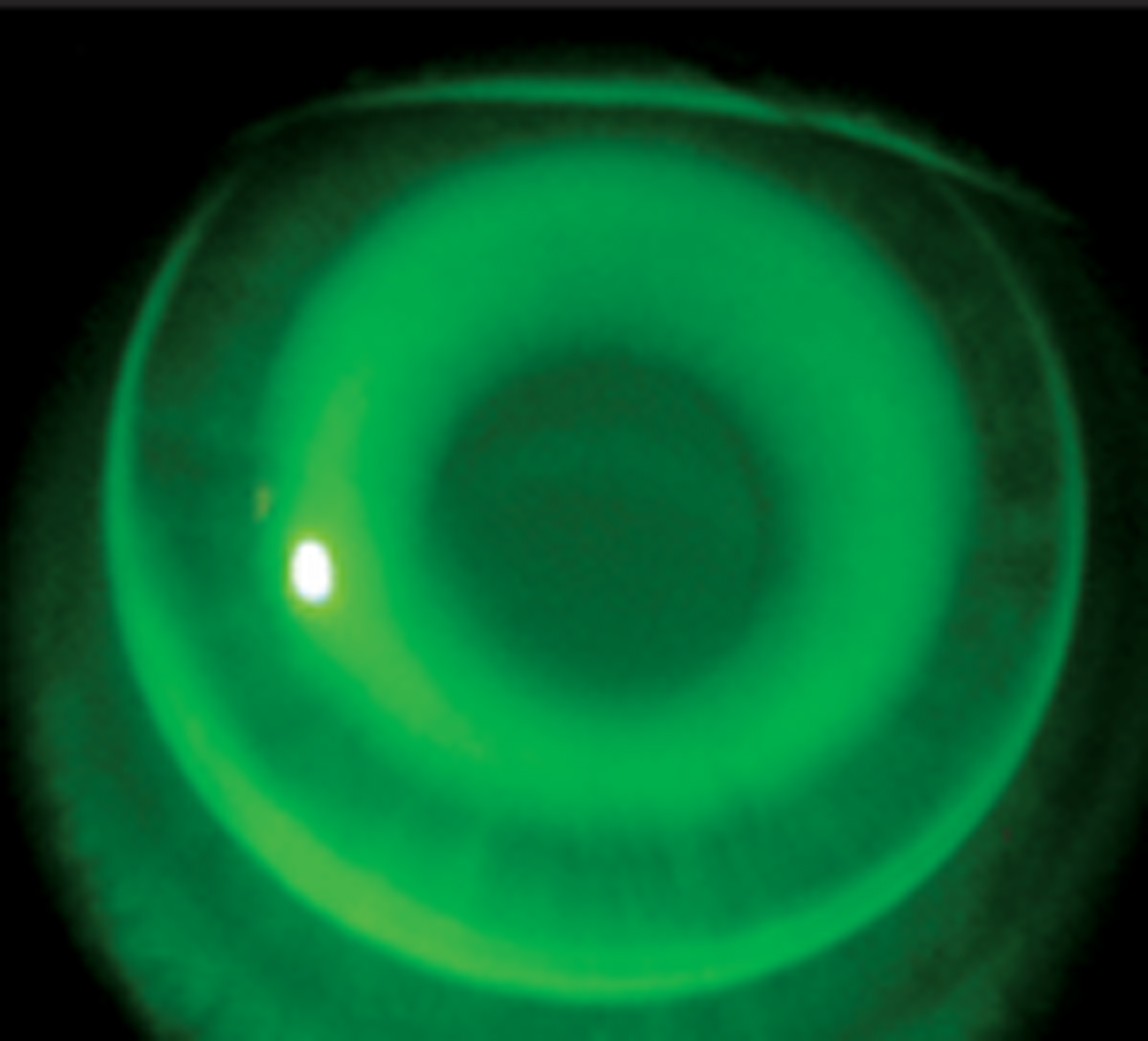 |
| Treatment zone decentration aids in slowing myopia progression in patients wearing ortho-k lenses. Photo: Kenneth Daniels, OD. Click image to enlarge. |
Looking to improve your orthokeratology (ortho-K) outcomes? Recent studies have shown that a larger treatment zone decentration is associated with smaller axial length growth. It’s also been reported that axial length growth is negatively correlated with treatment zone decentration in children. In a recent study, researchers aimed to confirm these associations in children who underwent ortho-K and to explore the link between treatment zone decentration and relative corneal refractive power.
A total of 400 myopic children participated, with half wearing ortho-K lenses and the other half wearing single-vision spectacles as the controls. Cycloplegic refraction was performed at baseline. Axial length was measured at baseline and 12 months after initial lens wear, and axial length growth was defined as the difference. In the ortho-K group, treatment zone decentration and relative corneal refractive power were calculated from the topography map obtained at the 12-month visit.
Compared with the controls, children wearing ortho-K lenses had significantly smaller axial length growth over one year. Axial length growth was significantly and negatively associated with summed relative corneal refractive power within the central cornea of 2mm in radius, as well as the treatment zone decentration magnitude but not direction. Treatment zone decentration caused an asymmetrical distribution of the relative corneal refractive power with the nasal side plus power shifting toward the corneal center.
For chord radii ranging from 1mm to 2mm, the association between treatment zone decentration and the summed relative corneal refractive power was significant, and the proportion of variance accountable increased with chord radius. For chord radii beyond 1.5mm, the association between baseline spherical equivalent and summed relative corneal refractive power was significant. The portion of variance accountable by spherical equivalent increased and peaked at a 2.5mm chord radius.
“A treatment zone decentration pushed the reverse zone with positive relative corneal refractive power toward the center and entered the summation window on one side of the cornea,” the study authors explained in their paper for BMC Ophthalmology. “On the other side of the cornea, the rising part of the relative corneal refractive power was pushed away from the center and only left a flat portion in the summation window. The net effect was a greater summed relative corneal refractive power in children with greater treatment zone decentration.”
A positive correlation between treatment zone decentration and the summed relative corneal refractive power was significant when the chord radius was within 1mm to 2mm, with the peak at 1.50mm. At chord radii beyond 2.5mm, the association between summed relative corneal refractive power and treatment zone decentration became insignificant. Another factor that affected the summed relative corneal refractive power was spherical equivalent; however, the association was only significant when the chord radius was larger than 1mm.
“For a child wearing a lens with a large back optic zone diameter, such as 6.2mm, treatment zone decentration is effectively reducing the back optic zone diameter size on one side of the cornea. Therefore, our finding is consistent with the finding that prefers a smaller back optic zone diameter,” the investigators explained. “We speculate that the correlation between treatment zone decentration and axial length growth in children wearing a lens with small back optic zone diameter may not be significant. Another important consideration is the toric vs. spherical design ortho-K lens for children with substantial corneal astigmatism.”
The team concluded that a larger treatment zone decentration was associated with a larger summed relative corneal refractive power in the central cornea, which may be one of the reasons why treatment zone decentration is beneficial in slowing myopia progression.
Lin W, Gu T, Bi H, et al. The treatment zone decentration and corneal refractive profile changes in children undergoing orthokeratology treatment. BMC Ophthalmol. April 18, 2022. [Epub ahead of print]. |

